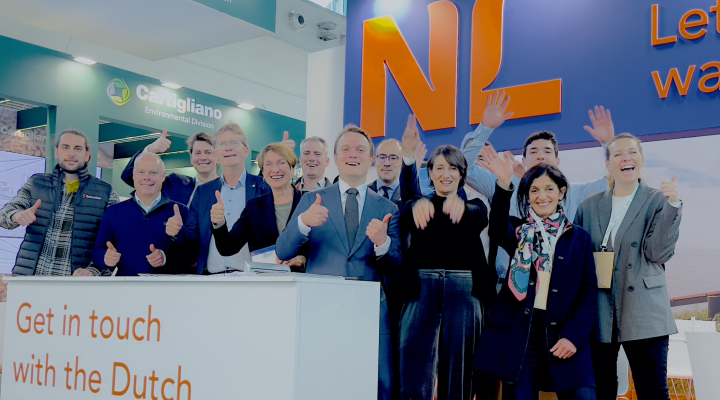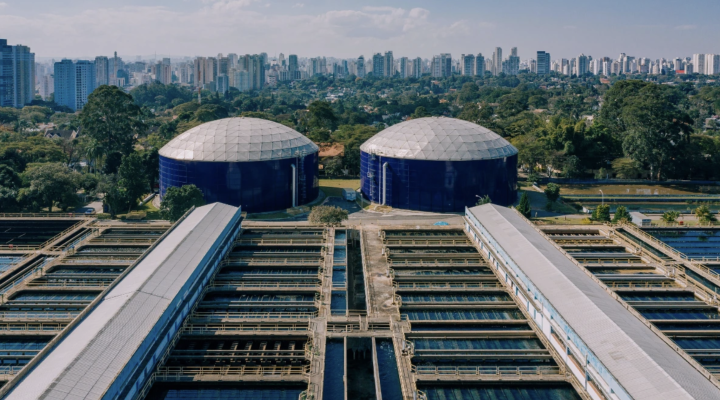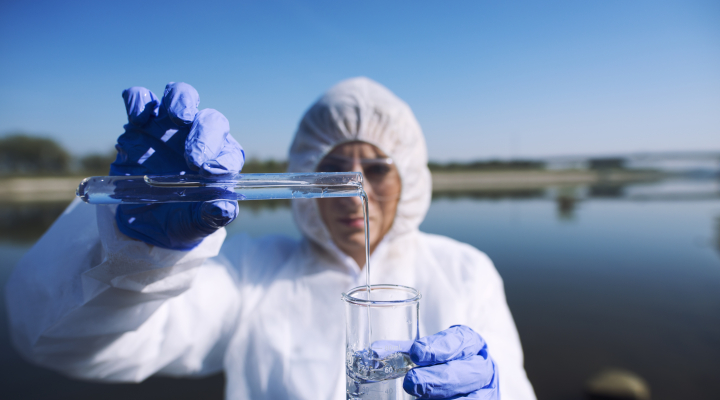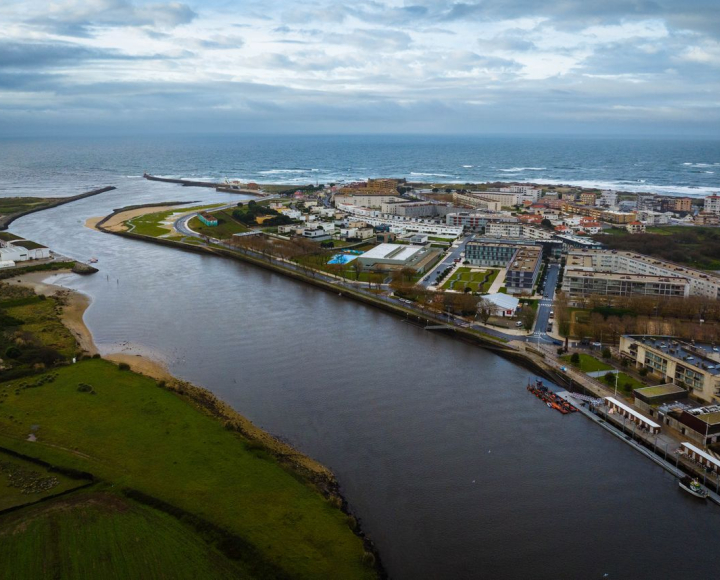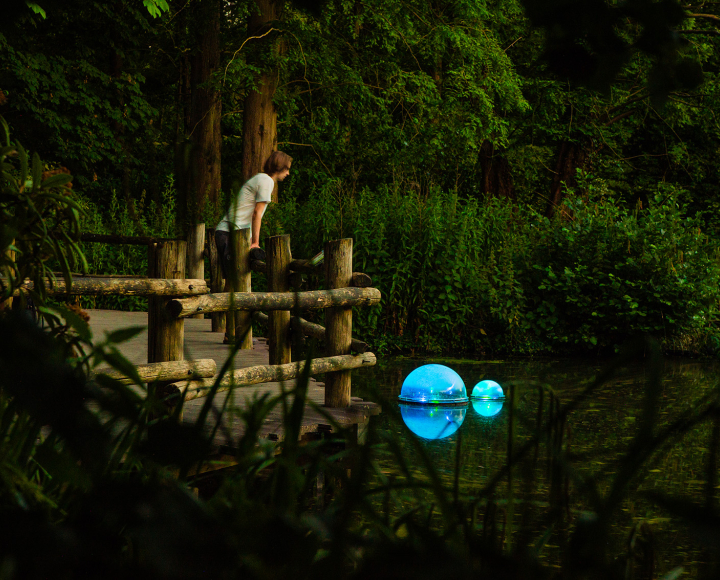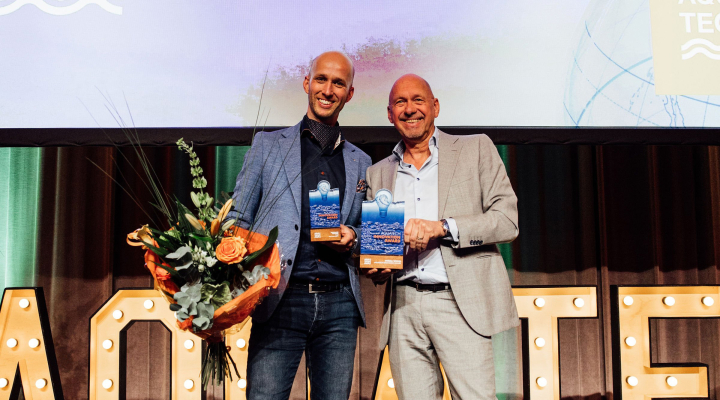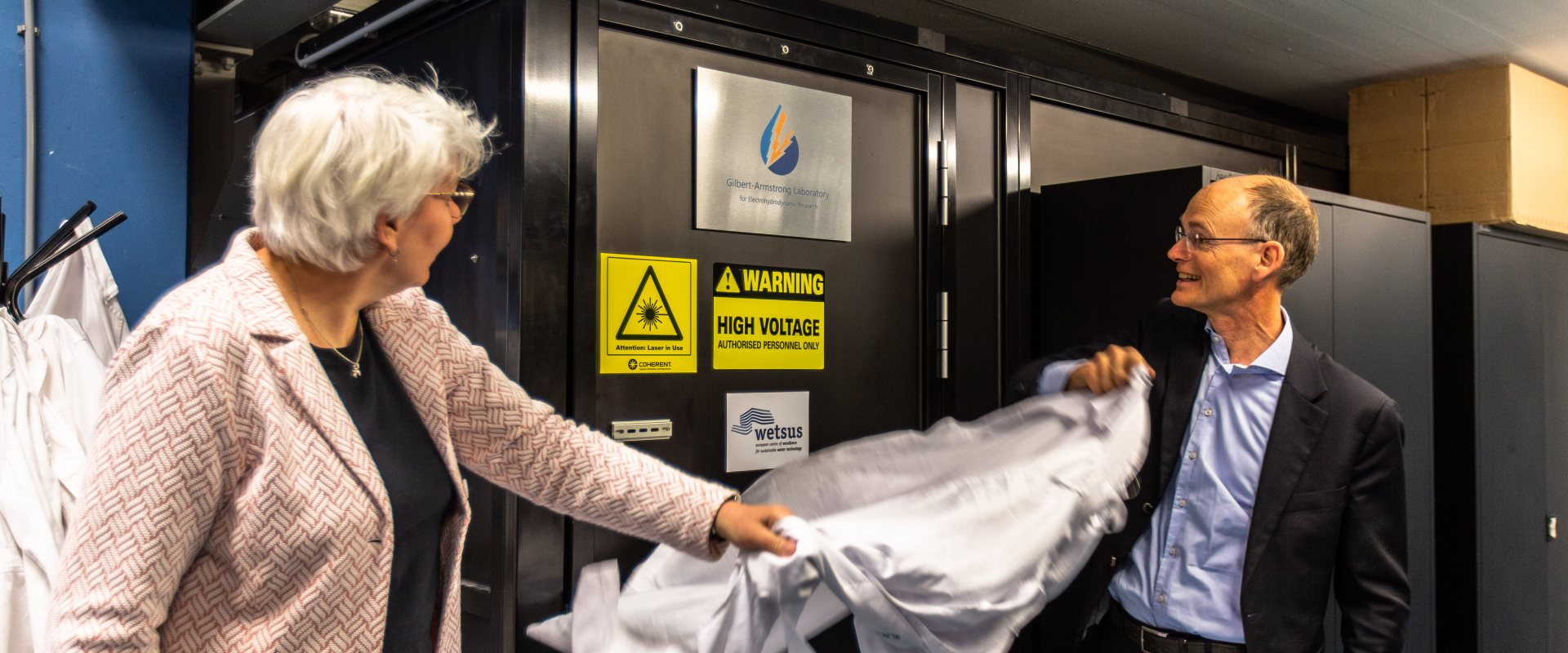
WaterCampus Leeuwarden adds high-voltage laboratory to its research facilities, the Netherlands
Water technology research centre Wetsus and NHL Stenden University opened the Gilbert-Armstrong high-voltage laboratory at the WaterCampus in Leeuwarden, the Netherlands.
Both institutes expanded their research facility to allow their students and researchers to study electrohydrodynamics in more detail. The laboratory was officially opened by Wetsus-director Cees Buisman (right on top photo) and NHL-chairman Erica Schaper (left) on 18 April.
Two famous inventors
At the opening ceremony, the name of the Gilbert-Armstrong Laboratory was officially revealed.
The name refers to two famous British researchers: Ian Gilbert, the inventor of electrospray and William Armstrong, the inventor of floating water bridge. Both phenomena are part of two research subjects being studied in the lab.
The new lab adds to the advanced existing facilities for senior researchers, PhD-student and master students at Wetsus and NHL Stenden to experiment with innovative water technologies.
Electrically charged water
Electrohydrodynamics, also known as electro-fluid-dynamics or electrokinetics, is the study of the dynamics of electrically charged fluids. It studies the motions of ionized particles or molecules and their interactions with electric fields and the surrounding fluid, in this case water.
An example is electrospray, where water flows through a small, electrically charged atomizer and makes very small drops through the load. This process is already being used industrially, but in the laboratory researchers can to bring water to another state through high voltage. The technology has a potential for desalination of sea water.
Floating water bridge
The new lab can also be used for the current research on the ‘floating water bridge’. This effect is created by applying a high voltage to two containers of water, which causes the water to climb out of the containers and form a bridge in mid-air as the containers are slowly pulled apart.
The study of this complex phenomena provides a deeper fundamental understanding of water. It also gives insight into areas ranging from desalination and zero-waste manufacturing to biochemistry.




